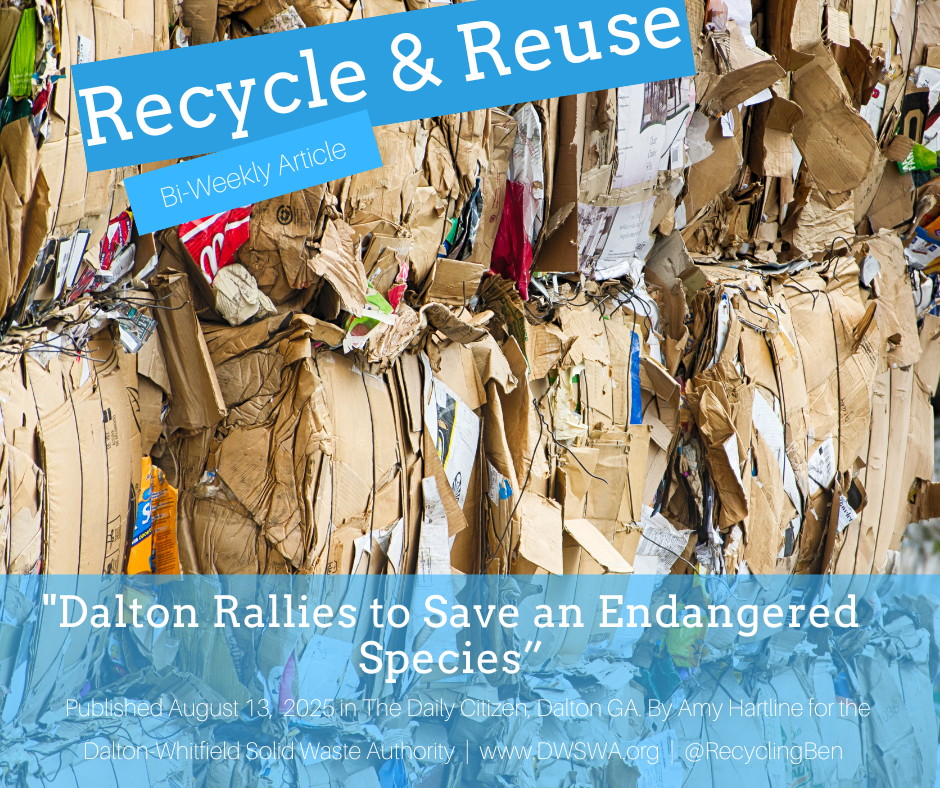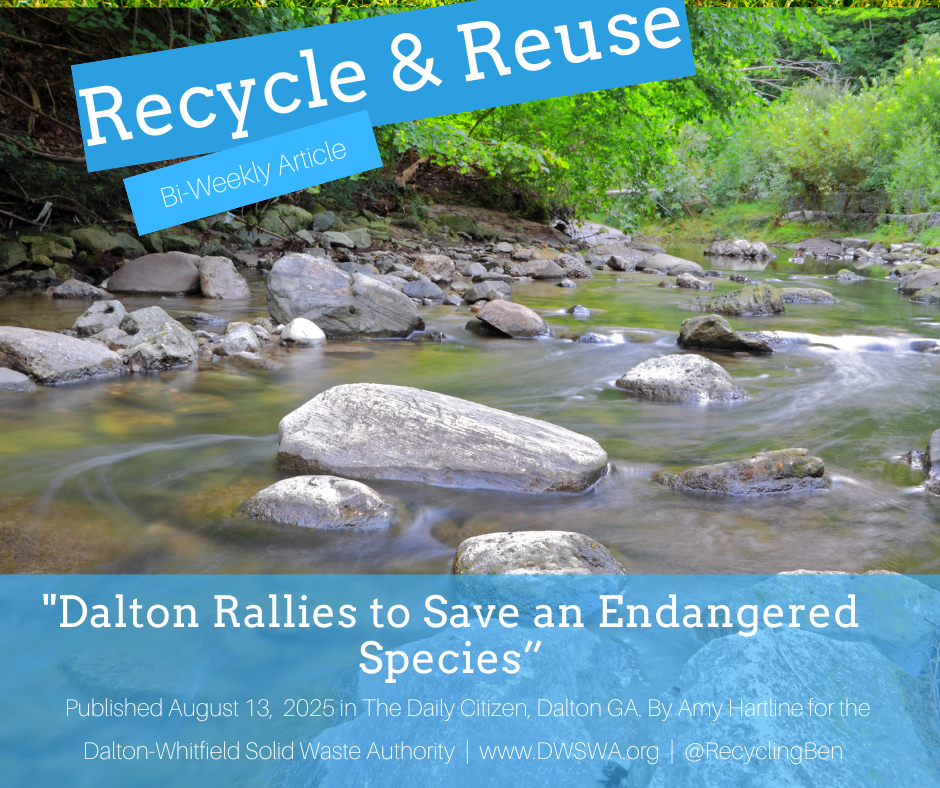Take a Child Outside, Connect With Nature
/Take a Child Outside today and help them reconnect with nature. Being outdoors has physical and mental benefits for people of all ages.
(Published on Wednesday, September 30, 2015, in The Daily Citizen newspaper, Dalton, GA.)
Recycle & Reuse: Take a Child Outside, Connect with Nature
Today is the last day of Take a Child Outside Week, a program designed to encourage children and adults to spend time together outdoors. Though the week dedicated to connecting with nature is over, it’s always a good time to encourage people of all ages to go outdoors. Being outside has many benefits including reducing obesity, improving mental focus and creativity, and connecting with the natural world.
A short ten-minute walk at the nearest city park will not just help a child get some exercise, it can help connect them to the environment. With more urbanization and distractions from the digital world than ever before the connection to and importance of the natural world can get lost. How can an individual that is not connected to the environment be expected to step up to protect it in the future?
Richard Louv, author of Last Child in the Woods: Saving Our Children From Nature-Deficit Disorder and The Nature Principle said, “The future will belong to the nature-smart - those individuals, families, businesses, and political leaders who develop a deeper understanding of the transformative power of the natural world and who balance the virtual with the real. The more high-tech we become, the more nature we need.”
Reconnecting with nature does not require a hiking trip on the Appalachian Trail or to climb a mountain like Everest. All that is needed is a few extra minutes in your day to visit a nearby green space like a park, walking path, or garden. While adults may want to focus on their health and ride a bicycle, walk, or jog children can enjoy nature play. This can also be described as free play in a natural environment.
According to the guidebook Nature Play and Learning Places: Creating and managing places where children engage with nature by Robin C. Moore, which was released this last fall by the Natural Learning Initiative, and the National Wildlife Federation, Nature Play is defined as “a learning process, engaging children in working together, to develop physical skills, to exercise their imaginations, to stimulate poetic expression, to begin to understand the workings of the world around them.”
For an activity to be considered nature play it needs to allow a child to play and learn by manipulating natural elements in the environment while using their sensory, fine motor and gross motor skills. Building tiny forts or homes out of natural materials, moving rocks in a stream to see what happens to the water, or building stories or inventing dramas inspired by the materials available all contribute to self-directed active play.
Here are several nature play and learning activities you can try with no or minimal supplies from the official Take a Child Outside website, www.takeachildoutside.org, which list age appropriate activities starting with toddlers.
• Listen & Feel: Activity for all ages that can take place anywhere and any time with no special materials required. A natural area like a backyard or park is recommended. To do this activity find a comfortable and safe place to sit. Close your eyes for one minute (30 seconds for younger children). Listen to all the sounds you can hear. What are they? From which direction did they come? Who might have made them? Next, close your eyes again - this time focus on the sunlight and air touching your face or arms. Talk about what you can notice about the world through the sense of touch. Where is the sun? From what direction is the breeze blowing? Does the air feel warm and gentle or sharp and brisk?
• Rainy Days: Activity appropriate for all ages that can also take place any time it’s raining, preferably in a natural area. Be prepared to take raingear with you if you want to stay dry, and of course be safe by not going out during a thunderstorm. For this activity go outside on a rainy day to explore. Dress to stay comfortable but keep your hands free - no umbrellas today! Peek into puddles, then listen for bird and frog calls. Discover how many kinds of raindrops you can see. Find a plant with rain dripping from the tips of its leaves. Try to find out where animals go when it is raining.
• Nature Bracelet: Recommended for ages three and up. For this outdoor activity you’ll need masking tape, preferably two inches wide. Since you’ll be picking up and keeping items be sure to go out to your backyard or where the collection of small non-living objects is allowed. To get started remove a length of tape that will wrap around your or your child’s wrist. Wrap the tape around your wrist with the sticky side up, facing away from your skin. As you walk around the yard or park, pick up small things and see if they stick to your bracelet—flower petals, small fallen leaves, sand and seeds work well. Save bracelets from previous walks and compare them through the seasons.
Liz Swafford is the Recycling and Education Program Coordinator for the Dalton-Whitfield Solid Waste Authority. Learn more about recycling in Whitfield County by visiting www.DWSWA.org or call 706-278-5001.
































